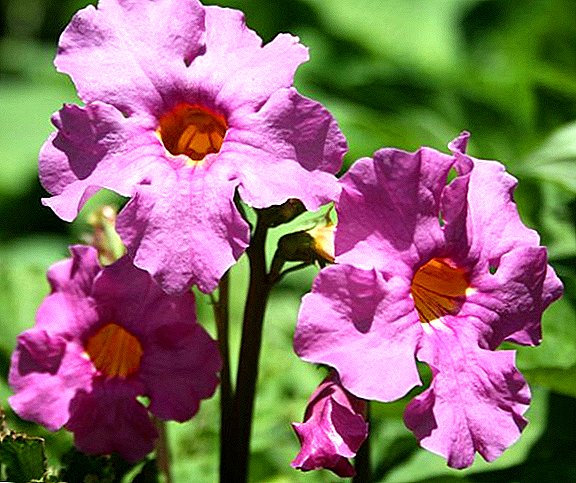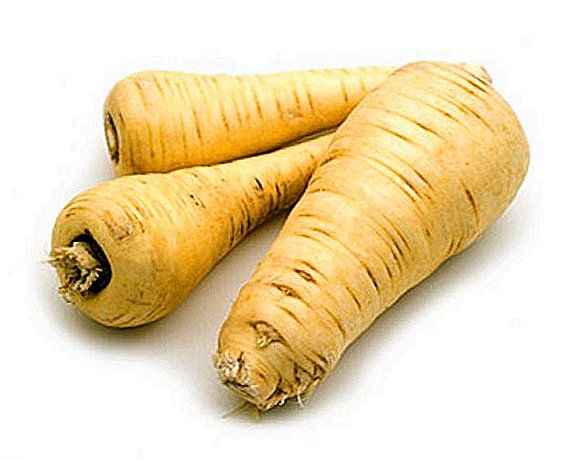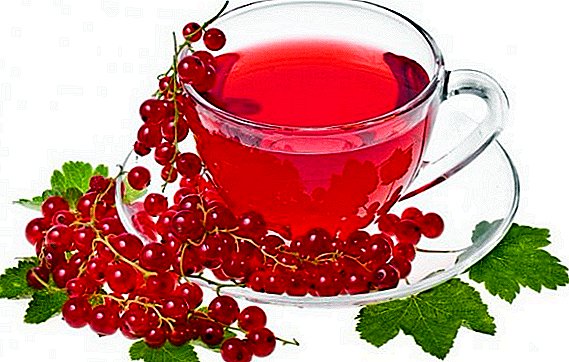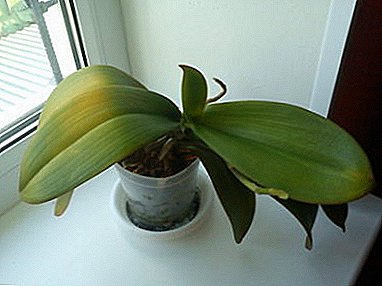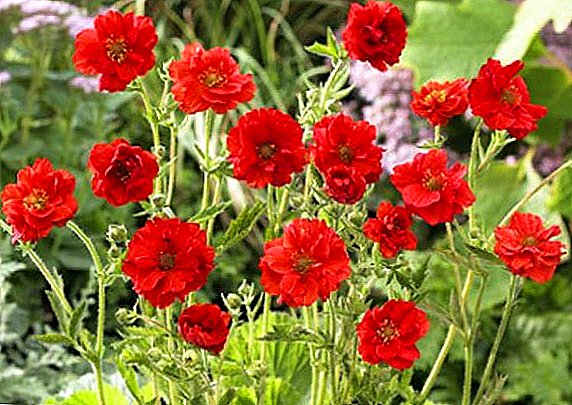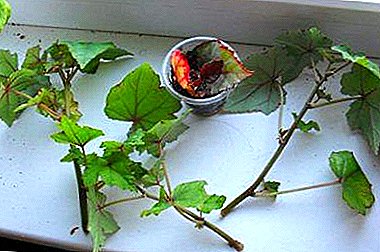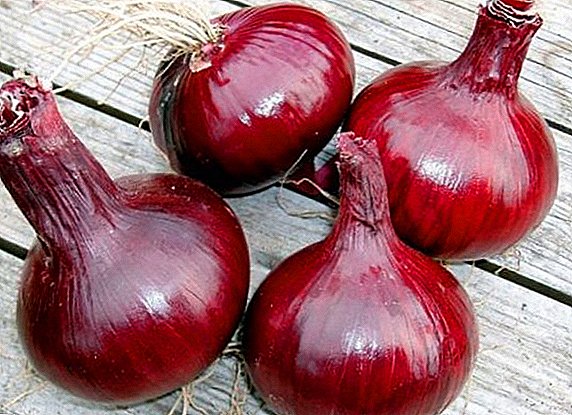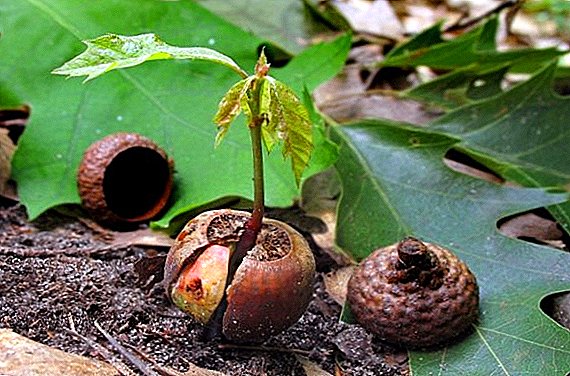 The power and strength of oak trees are amazing, but if you think that they have become so magnificent over the centuries, these trees are beginning to cause admiration. Adult oaks are beautiful stately trees with dense foliage and a powerful trunk, they are a symbol of immortality, wisdom and strength. To grow such a tree on or near your own plot is to remain in the memory of more than one generation of your descendants.
The power and strength of oak trees are amazing, but if you think that they have become so magnificent over the centuries, these trees are beginning to cause admiration. Adult oaks are beautiful stately trees with dense foliage and a powerful trunk, they are a symbol of immortality, wisdom and strength. To grow such a tree on or near your own plot is to remain in the memory of more than one generation of your descendants.
Chemical composition
Oak, or rather, its wood, leaves, acorns are a real treasury of trace elements and other useful substances used by humans for medical purposes, as well as for industrial use.
Let's consider what is included in the composition of acorns:
- tannins (up to 20%);
- gallic and aegallic organic acids;
- carbohydrates, sugars (pentosans up to 14%);
- flavonoids;
- vitamins: A, B1, B2, B5, B6, B9, PP;
- macronutrients: potassium, calcium, magnesium, phosphorus;
- trace elements: iron, manganese, copper, zinc, aluminum, chromium, barium, vanadium, selenium, nickel, strontium, boron;
- essential amino acids: valine, histidine, isoleucine, leucine, lysine, methionine, threonine, tryptophan, phenylalanine;
- interchangeable amino acids: alanine, aspartic acid, glycine, glutamic acid, proline, serine, tyrosine, cysteine;
- Omega-6 fatty acids, palmitic and stearic saturated fatty acids, oleic monounsaturated fatty acid, linoleic polyunsaturated fatty acid;
- starch, proteins, oils (up to 5%), ash.
Did you know? The eightieth anniversary is an impressive date for each person, and if you still managed to live so much in marriage, it deserves admiration. Therefore, it is this term of the marriage life that he called the "oak" wedding, precisely because of the longevity of the tree itself.
Energy value and calorie
Acorns of an oak have rather high power value, their caloric content makes 387 kcal on 100 g. 
Beneficial features
Acorns in the modern world are an undervalued product. And the benefits of them can be significant for a person, because they have a special nutritional and therapeutic value. Of these, products (coffee surrogate, flour, cereal) are made, which, due to the presence of a variety of nutrients, vitamins, trace elements, have a beneficial effect on the human body.
Learn how to plant red oak.Tinctures, decoctions and other forms of the use of the fruits of oak help with problems with the cardiovascular, urinary, digestive systems. Remedies from acorns help in the fight against cancer, as well as in the treatment of hernia and diabetes. Acorns are effective for hair coloring. They are given in the form of food to domestic animals (especially pigs), they feed on wild boars.
Collection and selection
Acorns are harvested from mid-August to early October, when they are characterized by a dark brown tint. Acorns are collected correctly from the ground, and after a few days you can repeat the process and collect a new batch of fruit.
Important! Fallen early acorns are most likely damaged by acorn weevils or other pests. For this reason, it is better to collect the fallen fruits as late as they have the best characteristics. The main thing is that they do not have time to germinate.
Handling and cleaning
Acorns for further use must be processed. First, carry out the cleaning process from the caps and peel. To remove the bitterness they need to soak and heat. It is done this way. The fruits are cut into four parts, filled with water, left to soak for a couple of days, changing the water at least three times a day. After the required time has elapsed, the water with the acorns is brought to a boil, the fruits are extracted, ground, dried in the sun, and then in the oven. As a result, acorns are ready for further processing and preparation.
Harvesting and storage
Acorns for the purpose of cooking are stored in a dry and dark place. Harvesting them for future use for a whole year in significant quantities is not recommended, as the raw material from the fruits of the oak is not stored for a long time and quickly becomes useless.
Such a beautiful plant like an oak will look very harmonious with yellow colors: maple, linden, yellow acacia.
Harm and contraindications
Before you start eating acorns, you need to remember the following:
- categorically it is not recommended to use fallen acorns in food, as they may be infected and dangerous to health;
- Oak fruits require a lot of time for digestion in the stomach, therefore, if the organ is not sufficiently functioning, it is not recommended to use them at all;
- eating raw acorns can harm the bladder;
- that they are beneficial and not harmful, they can not be abused.
Important! Without heat treatment, acorns cannot be eaten, as the flavonol quercetin contained in them is poisonous.
Application
Acorns are used for culinary as well as medical purposes. If modern people eat them rarely enough, for the treatment and prevention of many health problems, the fruits of the oak are used much more often. 
In cooking
In times of famine, the fruits of the oak saved people from starvation. Now they are made of coffee, flour, cereals. Products from acorns are almost as good as natural coffee, cocoa beans, olives. Confectionery, coffee, pastries, cereals - this is the main area of use of acorns:
- before they were fried, dried, covered with sugar — a useful sweetness was obtained;
- in the XIX century, coffee was considered a luxury, so acorns became an alternative, they were also roasted, ground - and acorn coffee was obtained, which some of our contemporaries continue to use;
- the bread was obtained from the oak fruits pounded into flour; for this, a tenth part of the wheat flour was added to the composition;
- a significant amount of starch in them helps these fruits to be excellent thickeners for various liquid dishes;
- you can make butter from acorns, which is very similar to almond or peanut butter;
- Some varieties are eaten as nuts, but not everyone may like their taste.

Did you know? Acorns are especially popular in Korea. Here they are an important ingredient in national cuisine (for cooking jelly, noodles and other dishes).
In medicine
Acorns, which in their composition have many beneficial elements for the body, are successfully used to treat and prevent many health problems:
- they relieve swelling, inflammation, cramps, have diuretic and antioxidant effects (due to the presence of quercetin in the active ingredient, but only acorns from oaks, which are more than half a century old, have it);
- they have bactericidal and enveloping effects, they are able to resist tumors;
- help with toothache, unhealthy gums, help stop bleeding;
- used for the treatment of urinary organs, with enuresis, female diseases (heavy menstruation, bleeding), to increase potency;
- beneficial effect on the digestive system, a decoction of acorns has a beneficial effect in case of poisoning, upset, colitis;
- tincture of the fruit of the oak helps with hypertension, osteochondrosis, hernias, problems with the joints;
- coffee from acorns relieves asthma, bronchitis and coughing.
Important! Oak forests have healing powers. The leaves and bark of these trees emit special phytoncides that can relieve a headache and normalize the nervous system.
Growing oak from acorn at home
Oak can be fully grown at home and from the acorn, and from the finished cutting. We consider the cultivation of oak directly from the acorn, the more this method is particularly popular among those who wish to grow this powerful tree. In the first period (2-3 years) growth occurs much faster than later, so this process will be especially exciting to watch in the first years of the young tree life.
It will be interesting to know how many trees live.
Harvesting the acorn and checking it
The process of growing oak seedlings from acorns can be quite quick and easy if you prepare the material for planting correctly and correctly. Collecting fruit for this purpose is recommended in deciduous forest in the fall, when foliage is dropped, and acorns during this period are considered fully ripe. For germinating the cutting, the fallen acorns of the most beautiful and powerful tree are suitable. One must first “listen” to them, i.e., shake them in order to determine the viability of the fetal nucleus (it should not knock).  From the place where the planting material was collected, you need to collect foliage native to it, which is opal, as well as soil. All this is useful for creating preservation conditions before disembarking. At home, it is once again recommended to check the planting material brought from the forest. To do this, you need to pour cold water into the container and lower the fruit there. Those acorns that pop up are not suitable for planting, they are empty. After a few minutes you need to repeat the procedure. Non-floating fruit are suitable as planting material.
From the place where the planting material was collected, you need to collect foliage native to it, which is opal, as well as soil. All this is useful for creating preservation conditions before disembarking. At home, it is once again recommended to check the planting material brought from the forest. To do this, you need to pour cold water into the container and lower the fruit there. Those acorns that pop up are not suitable for planting, they are empty. After a few minutes you need to repeat the procedure. Non-floating fruit are suitable as planting material.
Did you know? Oaks are characterized by a high level of electrical conductivity - more often than other trees there is lightning.
Seed Stratification
Selected fruits are placed in a jar with a lid (with holes) or a bag where the soil and foliage collected in the forest have been identified. All this is cleaned in a cellar or refrigerator with a temperature regime not lower than 0 ° C. This process of stratification occurs at the end of autumn or the beginning of winter, lasts a half to two months and contributes to the fact that acorns actively germinate.  The planting material must be closely monitored, the environment for their food must be well hydrated. However, if normal moisture is exceeded, the planting material will begin to rot, but if it is dry, it will not be possible to begin to germinate. This process of "conservation" is similar to the wintering of acorns under the snow cover, which helps to keep them in the required condition.
The planting material must be closely monitored, the environment for their food must be well hydrated. However, if normal moisture is exceeded, the planting material will begin to rot, but if it is dry, it will not be possible to begin to germinate. This process of "conservation" is similar to the wintering of acorns under the snow cover, which helps to keep them in the required condition.
Planting acorn
When small processes of roots appear in stratified fruits, they should be planted with the root down into cups or pots with peat and perlite, covered in the form of a greenhouse. In each cup or pot, you must first make holes, this is necessary in order to remove excess moisture from them.
Important! The first few weeks, seedlings need to be watered abundantly.At first, with the planted acorns, nothing visible will happen, since all the forces will be thrown by the plant on the development of the root system.

Sprout care
As soon as the ground part of the seedlings growing in the cups germinates, they should be moved under the lamp (for receiving additional light in winter) or on a well-lit window sill. It is necessary to monitor the level of soil moisture. If you notice that the seedling began to grow as if it had little space, you need to transplant it into a large container.
Transplant and site selection
When the seedlings of the future oak trees have noticeably grown stronger, they should be transplanted into the open ground (if weather conditions allow). For this, the potted plant should grow no less than 15 cm, its root should be formed, and the central stem should be clearly visible and have a healthy white shade, with leaflets appearing. Oak should be transplanted only in the earliest period of its development. In this case, the root system effectively grows and multiplies, the tree tries to thoroughly take its place under the sun.  Selected for planting seedling plot should be free, spacious, without neighborhood with houses and other buildings, as the root of the grown oak can destroy their foundation. Oaks do not tolerate dark places, in the shadow of other trees, the process of development and growth of seedlings will take a long time, and such a tree will not differ in its power and strength.
Selected for planting seedling plot should be free, spacious, without neighborhood with houses and other buildings, as the root of the grown oak can destroy their foundation. Oaks do not tolerate dark places, in the shadow of other trees, the process of development and growth of seedlings will take a long time, and such a tree will not differ in its power and strength.
Transplant strawberries, grapes, orchid, chrysanthemum, violet and peony.Before planting the area where the seedling will grow, you need to clear the grass from the grass, dig, while receiving the uniformity of the soil, and loosen to get oxygen. The diameter of the seedling site to be planted should be from 15 to 20 m. Then a hole is dug a little larger in size than the length of the roots of the seedling, it is fairly abundantly moistened. A seedling is taken from the pot along with the ground, determined in a prepared hole, the root is covered with soil, compacted, and well watered.
Important! No need to worry about the excess moisture for oak seedlings - it will go to the soil, but if it is lacking, then it is extremely undesirable for a tree.
 Around the seedling need to pour mulch to prevent drying out of the soil and the growth of unwanted weeds.
Around the seedling need to pour mulch to prevent drying out of the soil and the growth of unwanted weeds.Soil and fertilizer
For the cultivation of oak suitable fertile soil is not depleted, in which a lot of nutrients. To prevent the sprout from appearing, it is best to plant it in a pre-moistened soil, taken from the place where the mother tree grows. In the absence of such soil suitable fertile soil from the plot, mixed with peat moss or vermiculite, contributing to the retention of moisture. If the soil is not as nutritious as we would like, you need to fertilize it additionally with leafy soil or humus.
Plant also such beautiful trees as: Sakura, Delonix, Wisteria, Albizia, Rhododendron, Cercis, Magnolia, Lilac and Pyracantha.
Watering and moisture
Young oak trees require constant moisture. It is necessary to monitor its level until the tree fully grows stronger, usually up to five years. Oaks have a root of considerable length, capable of independently extracting moisture from the soil at considerable depths. Therefore, in the fall watering can be reduced, in winter it is not needed at all. 
Did you know? The longevity of products from oak can be thousands of years: in the county of Norfolk (England) a monument of the Bronze Age Sihenge, created in the XXI century BC, is presented. er
Irrigation
In summer, young trees require frequent moistening, and drip irrigation can help in this plan, which can provide a constant and uniform moistening of trees. This system is especially needed in the first years after planting a seedling in open ground. Its installation is carried out near the trunk of the tree to prevent excess and accumulation of moisture, which can lead to rotting of the root.
Read also what kind of drip irrigation is better for the greenhouse, how to make drip irrigation from plastic bottles, how much to water the lawn, what the drop system is, how to organize automatic drip irrigation and how to choose sprinklers for watering.With each subsequent year of life, the tree needs less and less attention and care. Its root goes deeper and deeper into the earth, the crown grows higher and higher. Therefore, further care requires watering only in a very hot and dry season.
Wintering
The fact that oak seedlings are planted long before the onset of winter helps them to gradually harden and prepare for wintering. Oak saplings should carry over the hibernation under the snow, as it is warmer for them, and the roots in this case are reliably protected. If the winter is without snow, then you can take care of the additional shelter of the plant with newsprint or a grid with small cells that need to be laid on the level of the tree trunk on the ground. 
Diseases and pests
Some diseases and pests can threaten a young oak tree:
- powdery mildew is a fungal infection in which spores are transferred during irrigation. To protect and destroy infection, a solution of colloidal sulfur or "Fundazole" is used;
- branch necrosis, which is disposed of by spraying iron sulphate;
- moth chelkovy, oak barbel, oak leafworm - insect pests that pose a threat to the tree. From them you can use "Decis" (25 g per 1 liter of water) or "Kinmiks" (50 g per 1 liter of water);
- May beetles and aphids bring considerable suffering to young plants. To get rid of them, the leaves need to be treated with pesticides.
Did you know? Fishermen will appreciate the fruits of oak because of the frequent presence of acorn weevils, beetles, larvae - as an attractive bait for fish. These pests live in whole acorns, in the fruit with a hole they no longer exist.
 Growing a powerful oak from a small acorn is not as difficult as it may seem at first glance. The main thing is to choose the planting material correctly, plant it properly and provide proper care for the future hero who will please more than one generation of your family with its grandeur.
Growing a powerful oak from a small acorn is not as difficult as it may seem at first glance. The main thing is to choose the planting material correctly, plant it properly and provide proper care for the future hero who will please more than one generation of your family with its grandeur.

